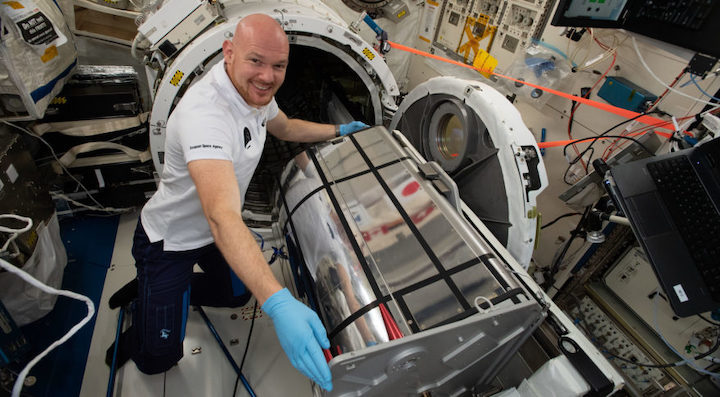26.10.2019

WASHINGTON — The German Space Agency DLR and Teledyne Brown Engineering of Huntsville, Alabama, have started operation of a jointly funded hyperspectral imager attached to the exterior of the International Space Station.
DLR and Teledyne said Oct. 24 during a press conference at the 70th International Astronautical Congress here that the DLR Earth Sensing Imaging Spectrometer, DESIS, is fully functional after a year of testing and calibration.
Representatives from DLR and Teledyne hailed the DESIS hosted payload as a model public-private partnership, saying the program stayed perfectly on schedule, but declined to discuss costs.
Jack Ickes, Teledyne’s senior vice president of Geospatial Solutions and International Manufacturing, said the company and the agency contributed “nearly equal” amounts to fund the multi-million dollar program.
He said attaching DESIS to the ISS reduced the mission cost to about a third that of a free-flying satellite.
“ISS is the largest flying satellite ever created and we’re taking advantage of that as our hosting platform,” he said.
Teledyne co-funded DESIS in exchange for commercial access to its imagery. DLR is using the imager for science. DESIS, as a hyperspectral imager, can sense the Earth in 235 spectral bands spanning from visual to near-infrared, allowing users to generate more measurements than purely optical imagers.
Uwe Knodt, DLR’s project manager for DESIS, said the imager can monitor vegetation stress, detect oil spills, and identify the spectral signature of plastic garbage patches out at sea.
DESIS also detected Neodymium, a rare-earth metal used in electronics, he said. Knodt said the detection — found on Earth’s surface, not underground, was the first time a rare-earth metal has been detected from space.
From the ISS’s 400-kilometer altitude, DESIS has a ground resolution of 30 meters and a spectral resolution of 2.55 nanometers. The sensor has a design life of five years, Ickes said.
DESIS occupies one of four payload slots on Teledyne’s MUSES — Multiple User System for Earth Sensing — Earth observation platform on the ISS. Ickes said the company is finalizing a contract with a prospective customer for the second payload slot, and is in talks with DLR to use the third.
“Data fusion is the future, where you can fly four instruments side by side coincident, and fuse the data,” Ickes said. Ideally, the value of MUSES increases, and the value of each instrument increases, as we add them.”
He said an announcement regarding a second MUSES customer should happen before the end of the year.
Quelle: SN
